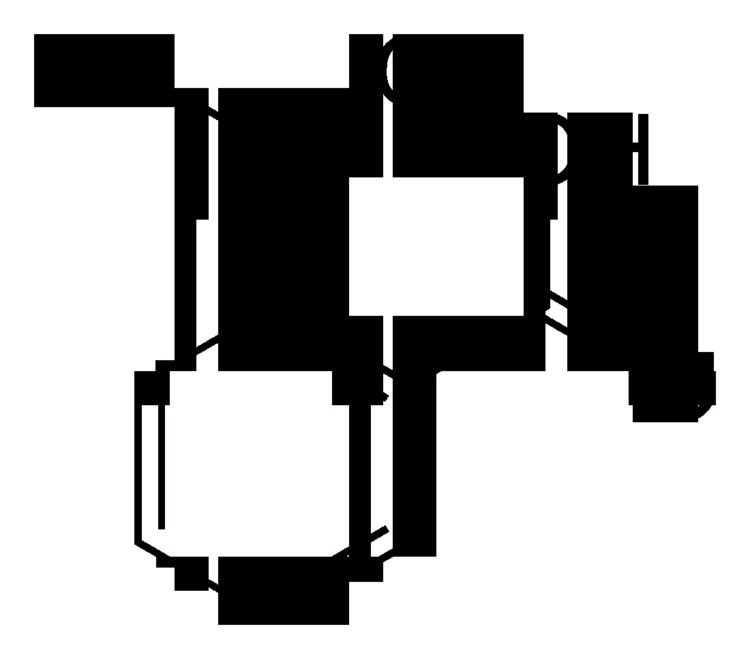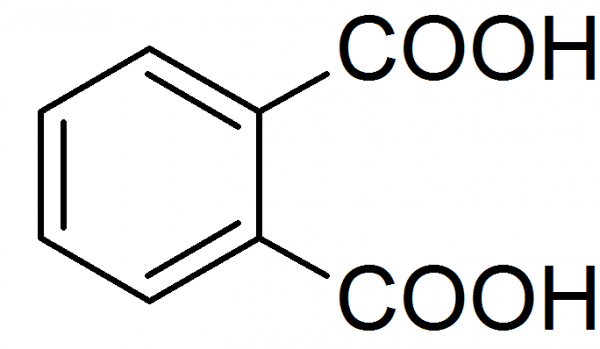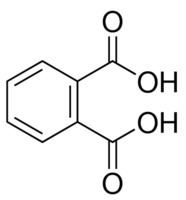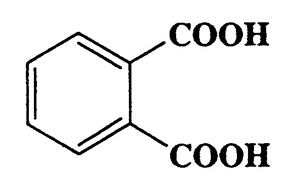Formula C6H4(COOH)2 Density 1.59 g/cm³ | Molar mass 166.14 g/mol Appearance white solid | |
 | ||
Related compounds | ||
How to make phthalic acid and phthalic anhydride
Phthalic acid is an aromatic dicarboxylic acid, with formula C6H4(CO2H)2. It is an isomer of isophthalic acid and terephthalic acid. Although phthalic acid is of modest commercial importance, the closely related derivative phthalic anhydride is a commodity chemical produced on a large scale.
Contents
- How to make phthalic acid and phthalic anhydride
- Production
- Reactions and uses
- Isomers
- Safety
- Biodegradation
- References

Production

Phthalic acid is produced by the catalytic oxidation of naphthalene or ortho-xylene directly to phthalic anhydride and a subsequent hydrolysis of the anhydride.

Phthalic acid was first obtained by French chemist Auguste Laurent in 1836 by oxidizing naphthalene tetrachloride. Believing the resulting substance to be a naphthalene derivative, he named it "naphthalic acid". After the Swiss chemist Jean Charles Galissard de Marignac determined its correct formula, Laurent gave it its present name. Manufacturing methods in the nineteenth century included oxidation of naphthalene tetrachloride with nitric acid, or, better, oxidation of the hydrocarbon with fuming sulfuric acid, using mercury or mercury(II) sulfate as a catalyst.
Reactions and uses

It is a dibasic acid, with pKa's of 2.89 and 5.51. The monopotassium salt, potassium hydrogen phthalate is a standard acid in analytical chemistry. Typically phthalate esters are prepared from the widely available phthalic anhydride. Reduction of phthalic acid with sodium amalgam in the presence of water gives the 1,3-cyclohexadiene derivative.
Isomers

Phthalic acid is one of three isomers of benzenedicarboxylic acid, the others being isophthalic acid and terephthalic acid. Sometimes the term "phthalic acids" is used to refer to this family of isomers, but in the singular, "phthalic acid", refers exclusively to the ortho- isomer.
Safety
The toxicity of phthalic acid is low with LD50 (mouse) of 550 mg/kg. However, many phthalate esters have been implicated as endocrine disruptors.
Biodegradation
The bacteria Pseudomonas sp. P1 degrades phthalic acid.
